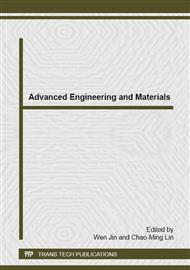p.139
p.149
p.154
p.160
p.166
p.172
p.177
p.185
p.191
Piezoelectric Optimum Placement via LQR Controller
Abstract:
The piezoelectric elements have received important attention from researchers because the piezoelectric materials are small, lightweight and resilient against adverse working environments and also piezoelectric materials can be used as both actuators and sensors. Actuators and sensors placement identification is a center study to avoid undesirable effects in flexible structure under control such as lack of observability and controllability system. In this research it was used a singular analysis of input control matrix as a piezoelectric placement tool and after piezoelectric placement study it was checked these positions through the piezoelectric elements placement in an optimum and no optimum positions and simulating the control through linear quadratic regulator technique in both positions. The flexible structure used as a model is a simply supported beam. As a main result the simulation demonstrate to be robust to piezoelectric placement identification.
Info:
Periodical:
Pages:
166-171
Citation:
Online since:
December 2014
Price:
Сopyright:
© 2015 Trans Tech Publications Ltd. All Rights Reserved
Share:
Citation:


